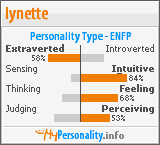For the Love of the Fortepiano: Mozart Piano Concerto no. 23 in A major K. 488
>> Thursday, March 11, 2010
Of all of the Mozart piano concerti, this one is probably my favorite for a number of reasons, not the least being the wonderfully moody Adagio movement, composed in the languid and love-sick key of F-sharp minor. This is a wonderful recording, featuring John Elliot Gardner and The English Baroque Soloists, with Malcolm Bilson on the fortepiano. Now if you have a good ear for tuning and you're thinking that this sounds more like A flat than A major, you would be partially correct. During Mozart's time, the instruments were tuned to about A-435 or so, as opposed to the A-440 we are accustomed to today. It's somewhere around a quarter of a step lower than the A we use. However, there's something magical about the authentic effect from pieces from this era that are played on period instruments.
I'm posting all three movements of this incredible concerto simply because all three movements merit a listen. So sit back and enjoy.
The Piano Concerto No. 23 in A major (K. 488) is a musical composition for piano and orchestra written by Wolfgang Amadeus Mozart. It was finished, according to Mozart's own catalogue, on March 2, 1786, around the time of the premiere of his opera, The Marriage of Figaro. It was one of three subscription concerts given that spring and was probably played by Mozart himself at one of these. The concerto is scored for piano solo and an orchestra consisting of one flute, two clarinets, two bassoons, two horns and strings.
It has three movements:
The second, slow movement, in ternary form, is impassioned and somewhat operatic in tone. The piano begins alone with a theme characterized by unusually wide leaps. This is the only movement by Mozart in F sharp minor. The dynamics are soft throughout most of the piece. The middle of the movement contains a brighter section in A major announced by flute and clarinet that Mozart would later use to introduce the trio "Ah! taci ingiusto core!" in his opera Don Giovanni.
The third movement is a rondo, shaded by moves into other keys as is the opening movement (to C major from E minor and back during the secondary theme in this case, for instance) and with a central section whose opening in F sharp minor is interrupted by a clarinet tune in D major, an intrusion that reminds us, notes Girdlestone, that instrumental music at the time was informed by opera buffa and its sudden changes of point of view as well as of scene.
Information: Wikipedia
I'm posting all three movements of this incredible concerto simply because all three movements merit a listen. So sit back and enjoy.
The Piano Concerto No. 23 in A major (K. 488) is a musical composition for piano and orchestra written by Wolfgang Amadeus Mozart. It was finished, according to Mozart's own catalogue, on March 2, 1786, around the time of the premiere of his opera, The Marriage of Figaro. It was one of three subscription concerts given that spring and was probably played by Mozart himself at one of these. The concerto is scored for piano solo and an orchestra consisting of one flute, two clarinets, two bassoons, two horns and strings.
It has three movements:
- Allegro in A major and common time.
- Adagio in F-sharp minor and 6/8 time (in later editions, the tempo is listed as Andante).
- Allegro assai in A and alla breve (in later editions, the tempo is listed as Presto).
The second, slow movement, in ternary form, is impassioned and somewhat operatic in tone. The piano begins alone with a theme characterized by unusually wide leaps. This is the only movement by Mozart in F sharp minor. The dynamics are soft throughout most of the piece. The middle of the movement contains a brighter section in A major announced by flute and clarinet that Mozart would later use to introduce the trio "Ah! taci ingiusto core!" in his opera Don Giovanni.
The third movement is a rondo, shaded by moves into other keys as is the opening movement (to C major from E minor and back during the secondary theme in this case, for instance) and with a central section whose opening in F sharp minor is interrupted by a clarinet tune in D major, an intrusion that reminds us, notes Girdlestone, that instrumental music at the time was informed by opera buffa and its sudden changes of point of view as well as of scene.
Information: Wikipedia





























1 comments:
That adagio is probably my favorite Mozart adagio for piano. And the third movment of that concerto is so upbeat, it makes me want to dance!
This series on the fortepiano made me go to the Harpsichord Clearing House Website to see what fortepianos are for sale. :D
Post a Comment